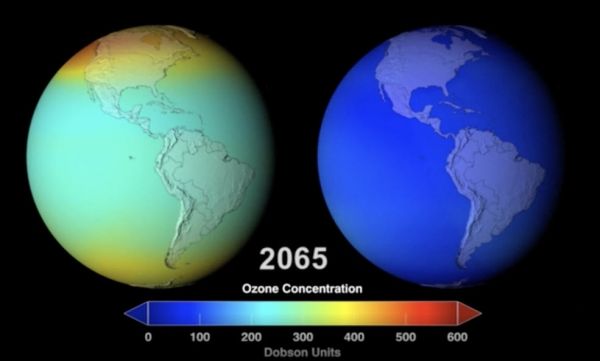Protecting the ozone layer also protects Earth’s vegetation and has prevented the planet from an additional 0.85 degrees Celsius of warming, according to new research from Lancaster University, NASA, and others. This new study in Nature demonstrates that by protecting the ozone layer, which blocks harmful ultraviolet (UV) radiation, the Montreal Protocol regulating ozone-depleting substances also protects plants – and their ability to pull carbon from the atmosphere. The impact from plants has not been accounted for in previous climate change research.
“We know the ozone layer is connected to climate. We know greenhouse gases affect the ozone layer. But what we’ve never done before this is connect the ozone layer to the terrestrial carbon cycle,” said lead author Paul Young, an atmospheric and climate scientist at Lancaster University in the United Kingdom.
The ozone layer in the upper atmosphere, or stratosphere, blocks UV radiation that can damage living tissue, including plants. The ozone “hole,” discovered in 1985, is the result of humans emitting chlorofluorocarbons (CFCs), which are ozone-depleting chemicals and greenhouse gases that were once commonly used as coolants in refrigerators and in aerosols like hairspray. They were then phased out of use by the Montreal Protocol signed in 1987 and its subsequent amendments.
Continue reading at NASA Goddard Space Flight Center
Image via NASA Goddard Space Flight Center


